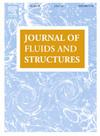A THINC-based numerical model for incompressible flows with free surfaces on the overset grids: On preserving accuracy and conservation of volume fraction
IF 3.4
2区 工程技术
Q1 ENGINEERING, MECHANICAL
引用次数: 0
Abstract
In this paper, we develop an accurate and robust numerical model for incompressible multiphase flows with free surface on the unstructured overset grids within the framework of OpenFOAM. To capture the moving interface between two immiscible fluids, THINC/QQ (THINC method with quadratic surface representation and Gauss quadrature) scheme is presented on the static and dynamic overset grids using the volume of fluid (VOF) method. A novel interpolation algorithm is proposed to transfer the volume fraction across the overset grids, which significantly improves the geometric faithfulness and numerical conservation of free surfaces since the interface is reconstructed and represented as quadratic surface in the fringe cells of the overset grids using the THINC formulation. A pseudo-Laplacian approach is utilized to interpolate both the velocity and pressure fields across overset grids achieving a second-order accuracy. The incompressible Navier–Stokes equations are solved together with a transport equation of volume fraction using second-order finite volume schemes, which then is coupled with the motion solver during each time step to obtain converged solution between the hydrodynamic flow and kinematic motion of the rigid body. The so-called thincFoam/overset, when used in the transient simulation of interfacial multiphase flows, provides high-fidelity solutions with an order of magnitude reduction in the conservation error of volume fraction field. Numerical verifications have been carried out through various 2D and 3D benchmark tests, such as the water entry of a wedge, floating structure in regular waves, and water entry of a horizontal cylinder. The numerical results demonstrate that the present model shows great potential in capturing complex moving interfaces undergoing large deformations and topological changes with excellent conservation for simulating the nonlinear interaction between multiphase flows and solid structures.
覆盖网格上自由曲面不可压缩流动的一种基于thinc的数值模型:关于保持精度和体积分数守恒
在本文中,我们建立了一个精确和鲁棒的数值模型,用于在OpenFOAM框架下的非结构化覆盖网格上的不可压缩多相流的自由表面。为了捕获两种不混相流体之间的运动界面,采用流体体积法(VOF)在静态和动态重叠网格上提出了THINC/QQ(二次曲面表示和高斯正交的THINC方法)格式。提出了一种新的插值算法来传递覆盖网格上的体积分数,利用THINC公式在覆盖网格的边缘单元中重构界面并将其表示为二次曲面,从而显著提高了自由曲面的几何保密性和数值守恒性。利用伪拉普拉斯插值方法对速度场和压力场进行插值,达到二阶精度。采用二阶有限体积格式求解不可压缩的Navier-Stokes方程和体积分数输运方程,然后在每一时间步与运动求解器耦合,得到刚体流体动力流动和运动运动之间的收敛解。所谓的thincFoam/overset用于界面多相流的瞬态模拟时,提供了高保真度的解决方案,体积分数场的守恒误差降低了一个数量级。通过楔形入水、规则波浪中浮动结构、水平圆柱体入水等各种二维和三维基准试验进行了数值验证。数值结果表明,该模型在模拟多相流与固体结构之间的非线性相互作用方面具有良好的守恒性,在捕捉大变形和拓扑变化的复杂运动界面方面具有很大的潜力。
本文章由计算机程序翻译,如有差异,请以英文原文为准。
求助全文
约1分钟内获得全文
求助全文
来源期刊

Journal of Fluids and Structures
工程技术-工程:机械
CiteScore
6.90
自引率
8.30%
发文量
173
审稿时长
65 days
期刊介绍:
The Journal of Fluids and Structures serves as a focal point and a forum for the exchange of ideas, for the many kinds of specialists and practitioners concerned with fluid–structure interactions and the dynamics of systems related thereto, in any field. One of its aims is to foster the cross–fertilization of ideas, methods and techniques in the various disciplines involved.
The journal publishes papers that present original and significant contributions on all aspects of the mechanical interactions between fluids and solids, regardless of scale.
 求助内容:
求助内容: 应助结果提醒方式:
应助结果提醒方式:


